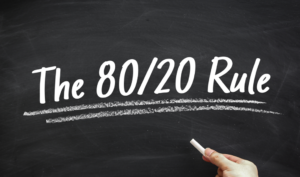
5 Effective Talent Management Strategies
A talent management strategy is a blueprint for optimizing and broadening employee performance within a company. It allows a company to map out a plan

A talent management strategy is a blueprint for optimizing and broadening employee performance within a company. It allows a company to map out a plan

Is your organization feeling the effects of the ‘great resignation?’ If not, you are one of the lucky few. Official figures from the U.S. Bureau

What is a great “place” to work today? With many abandoning the office tower or business park cubicle office, we’re increasingly emerging from an era

As we all know, flexibility is the lifeblood of HR, especially when it comes to adopting new technologies for attracting candidates. While many are resistant

Let’s face it: Many team members feel unsupported by their leaders, and it’s the single biggest reason why people quit their jobs. It also turns out

With up to 200,000 commercial flights a day, aviation must do many things right. From airport operations and internet booking systems to something much more

Employee engagement is a powerful dynamic and, even though it may seem as if this subject has been over-hyped in recent years, it hasn’t. Research shows that

Eighty percent of employees say they want to work from home at least part-time. And three in four consider remote work the “new normal.” In

“Engagement” is such a corporate word. It conjures up visions of HR and the perks and policies you hope will ultimately win over employees. If

Over the past year, the pandemic forced most organizations to re-evaluate their HR technology to better support their workforce in a new work environment. It’s

2020 was a year of job losses and significant changes for human resources and hiring teams. While the pandemic will eventually come to an end,

While 2020 was a rough year for many people and businesses, there were opportunities for growth. Sometimes, all we had to do was listen… to

The pandemic has only accelerated our ever-growing skills gap. However, there’s a silver lining to the chaos we’ve experienced this year. People have proved to

What is compensation transparency? And how does it help your company thrive now, and in the future? Systemic racial injustice, social unrest and the pandemic

For employees, what is an owner’s mindset? And how does open book leadership give employees total responsibility over their jobs? The shockwaves reverberating through our

What sets grateful workplaces apart from others? What impact do those environments have on employee engagement? Especially now — while most of us are still

To say COVID-19 has changed the recruiting and remote hiring would be an understatement. For a start, it’s likely you’re relying more heavily on the

I want you to look around at your employees — in person where possible, and on that Zoom call. Then, I want you to think

2020 is changing the way we work, without question. As the nature of the workplace transforms, performance management faces new challenges. We’ve seen many workforces

Remote work isn’t new. In fact, working from home been on the rise since 2010. But this new decade brought with it COVID-19, triggering a

If we’ve learned anything over the past decade, it is the power of a hashtag… #WorkTrends has been on quite an adventure. Over the past

In an outlook where the future looks bleak, only true leaders guide their team through the storm and come out stronger on the other side.

As the spotlight has brightened on racism. In response to recent miscarriages of justice, the emphasis on identifying racism within other aspects of life has

Many companies and job titles will go through drastic changes due to the ongoing COVID-19 pandemic. The HR sector and the people working in it

Virtual assistants (VA) offer young brands the flexibility to focus on other areas of the business. Don’t forget to subscribe to the podcast so you